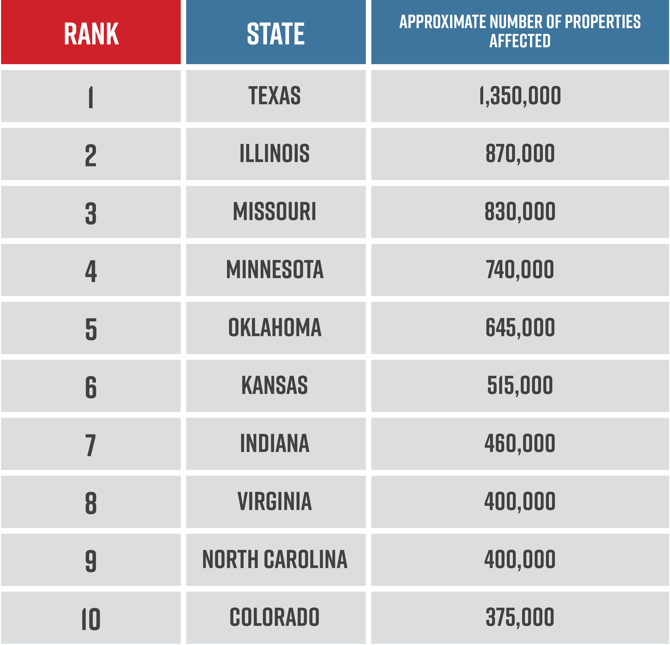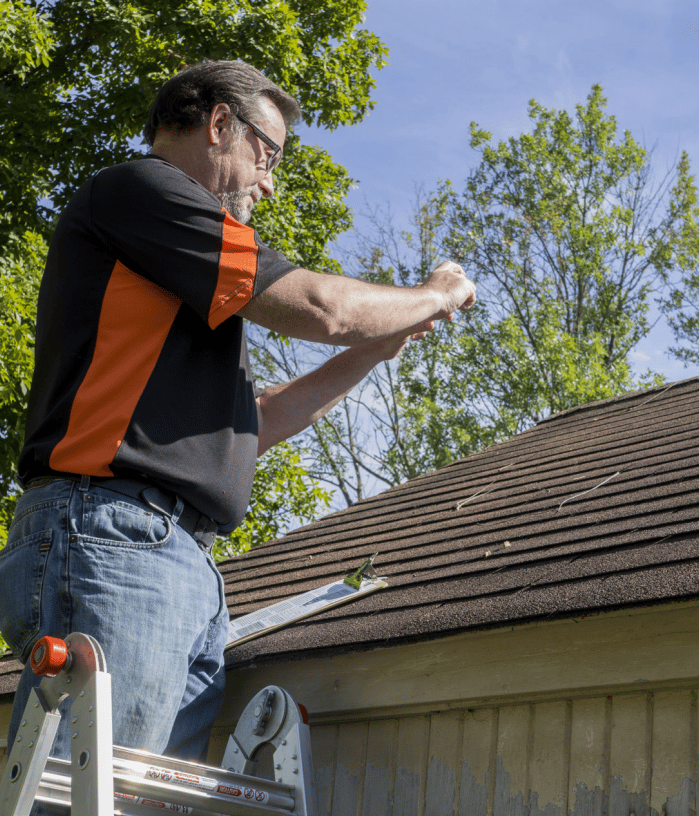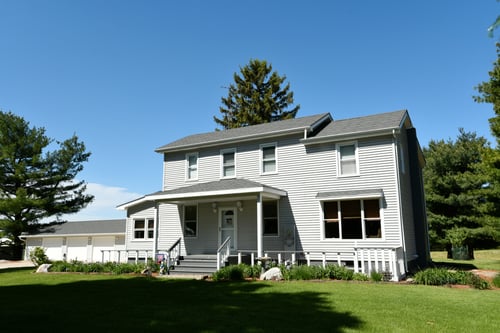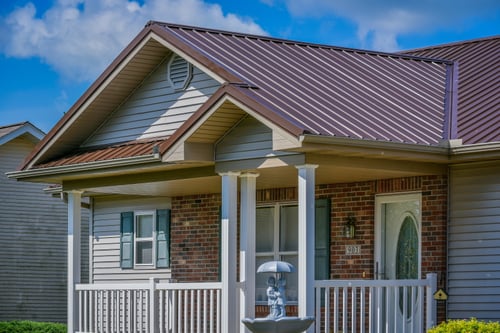- Home
- Paint and Substrates
- Paint
- Hail and Roof Damage
What you need to know about
Hail and Roof Damage
Understanding the Impact of Hail on Your Roof
Although tornadoes and hurricanes tend to dominate news weather coverage, Mother Nature is also known to play hardball, throwing destructive and deadly hailstones down on us every year. According to the National Oceanic and Atmospheric Administration (NOAA), the United States witnessed over 6,962 hail storms in 2023. And, when hail hits, it can hit hard.
The largest recorded hailstone in the United States made land in Vivian, South Dakota in 2010. That stone weighed in at nearly two pounds, and was almost eight inches in diameter—just about the size of a bowling ball! While hail of this magnitude is highly unusual, hail of any size can damage lesser roofs. It wasn’t long ago that a hailstorm in Texas destroyed dozens of commercial and residential rooftops, with some hailstones even managing to rip through roofs, landing at the feet of the unsuspecting individuals inside.
So, until some mastermind learns to control the weather, how can we protect ourselves from the sometimes devastating effects of hail? By understanding it—and shielding ourselves from it.

What is Hail and What Causes It?
Hailstones are clumps of layered ice that form when falling raindrops are carried skyward by thunderstorm updrafts. As they are carried upward, they reach extremely cold areas of the atmosphere (generally -10° C to -25° C) and, in the process, collide with other freezing raindrops. Eventually, a hailstone is formed, and it becomes too heavy for the updraft to sustain its high altitude. Gravity then takes over, and the hailstone falls back to the Earth, potentially damaging whatever lies below.
The size of hailstones, and the destruction they cause, typically depends on the strength and size of the updraft that carries them. Often, hailstones are fairly small. But, during intense thunderstorms, they can become behemoths.
Marble-sized hailstones typically fall to the Earth at around 20 mph, while baseball-sized hailstones can reach speeds of more than 100 mph. The amount of damage they cause can also be determined by their shape; while those that take on a smooth form can be damaging, it’s jagged hailstones that are the most destructive.

What States are Most Affected by Hail and When Does It Happen?
While hailstorms are most commonly associated with “Hail Alley,” the area consisting of Nebraska, Colorado, and Wyoming, hail can happen just about anywhere. In fact, it may surprise you to know that some of the most severe hail damage has happened outside these states. Here’s a look at 2017 hail damage estimates as reported by analytics firm Verisk, which provides data for insurance companies.
While determining where hail may strike can be a bit of a moving target, pinpointing when it may occur is a bit easier. Weather conditions that are ripe for hailstorm activity occur during the late spring, summer, and early fall months. So, May through September is “prime time” for hailstorms.
Ground Level Signs Your Roof May Have Incurred Hail Damage
Following a hailstorm, there are often some obvious ground-level signs of damage, such as broken or damaged windows, siding, or doors, which may indicate roof damage as well.
Here are 11 other things to look for which could indicate that your roof may have taken
a hit.
Siding, Gutters, and Downspouts
Check for damage such as dents, cracks, paint chips, or holes.

Hail Splatter Marks

Window and Door Screens
Check metal and fiberglass window screen mesh for tears.
Plants or Flowers
Outdoor Lights.
Furniture and Playsets
These outdoor items, left uncovered, can sustain dings and dents.
Fencing and Decks.

Garage Doors and Sheds
Look for dents, dings, paint chips, and scuffs on the siding and doors.

Debris or Broken Limbs
Shingles, tree branches, and other debris in your yard or pool means you experienced heavy wind that may have compromised your roof.

Water Stains or Mildew Growth
Hail-damaged roofs often allow water to seep into homes and garages, causing discoloration on ceilings and potential mold or mildew growth.

Bubbling Paint
Rooftop Level Signs Your Roof May Have Incurred Hail Damage
Cracked Slate or Clay Tiles
Heavy hail has been known to crack or completely split these types of roofing

Punctured Roofing
Damaged Shingles
Missing shingles may seem like a dead giveaway for hail damage, but this could simply indicate heavy winds. There are, however, signs of damage.
Learn More →Dented Metal
Metal roofing is less likely to sustain damage during a hailstorm, however an extreme hail event may cause dents and dings. This damage is typically cosmetic in nature.
Susceptibility of Different Roofing Materials to Hail Damage
Not all roofing is created equally, and it has long been common knowledge that certain materials withstand wind and hail better than others. However, there was not a defining standard. That all changed in 1996, when the Underwriters’ Laboratory (UL) created a national standard for roof impact resistance by rating roofing materials based on their resistance to impact testing with steel balls simulating 90 mph hailstones of different sizes. This resulted in the Class 1 – 4 scale, with Class 1 being most susceptible to damage and Class 4 being the toughest.
“Every year, thousands of homeowners lose their roofs to hail and wind damage,” Jack Stanton, State Farm Insurance Company’s Loss Mitigation coordinator told the Insurance Journal. “We now know that Class 4 materials offer some of the best long-term roof protection available to homeowners.”
In fact, the Class 4 rating gives many property insurance companies so much confidence that they often offer a premium discount on homeowner insurance just for installing a UL Class 4-rated roof! Metal roofing is UL Class 4-rated.

Top Benefits of Metal Roofing

Long Lifespan
Shingles aren’t expected to last more than 20 years, while a metal roof can
last 50-60 years.

Pleasing Aesthetics
Metal roofing offers beauty and brawn. Check out our visualizer tool to see
what a metal roof would look like on your home.

Lower Utility Costs
Metal roofing reflects much of the sun’s heat and energy, which results in lower energy bills.

High Sustainability
Metal roofing contains a high percentage of recycled materials. Plus, when its service life ends, it can be recycled again!

Fire Resistance
Unlike some roofing materials, metal is non-combustible. Even though it’s no more likely to be struck by lightning than other roofing materials, it won’t catch fire even if it is.

Potential Discounts
Because metal roofing has Class 4 hail resistance, many insurance providers offer discounts for installing it.
McElroy Metal to the Rescue
Residential Metal Roofing Guide
If you’re tired of replacing shingles and are ready to fight back against hail, you can count on McElroy Metal. We’ve been at this for more than 57 years, and we have dozens of superior UL Class 4-rated steel profiles that look as good as they perform.
To ensure your roof is installed properly by a reputable company, we have a national network of distributors and contractors. You can find one near you on our website.
Want to learn more about metal roofing? Be sure to download our Residential Metal Roofing Guide.

What Home and Building Owners Are Saying
Whether you’re installing a roof on a newly-constructed home or building or replacing an existing roof, selecting the right roofing material is an important decision. Most owners chose asphalt shingles out of habit, despite the fact that no building material has a shorter service life. Today, more people than ever are turning to metal for their roofing needs.
At McElroy Metal, we understand that our customers may have questions or concerns about metal roofing. To address those issues and show why a metal makes sense for your home or building, we’ve put together the following case studies from happy owners that have made the switch to metal.

Mary Hayes
You literally can’t tell that our roof isn’t regular shingles from the road. In fact, our neighbors are all shocked to find out our new roof is metal.

Gene Zoss
Several of the neighbors have commented how much they like it too. But they were concerned that it would be noisy when it rained. I tell them it’s not like one of my uninsulated sheds at the farm. Once you have the plywood deck and insulation, there’s no more noise than a traditional asphalt shingle roof.
.jpg?width=500&height=334&name=PUTNAM%2c%20IL01%20(1).jpg)
John Louis
There have been some neighbors come look at it because they like the idea that it’s maintenance free. More folks are definitely considering it for their homes. My brother is even going to go with it when his shingles need replacement.
Find a Distributor / Contractor Near You
Whether you’re building a new home or planning renovations, a metal roof can deliver long-term cost savings and comfort. To explore your options and find the product that meets your aesthetic and budgetary needs, contact a McElroy Metal distributor or contractor in your area today. We can’t wait to help make your dream home a reality.
To get the latest news and insights on metal roofing for your home or building delivered directly to your inbox, subscribe to our blog today!
The Latest on our Blog

How to hire a metal roofing contractor





